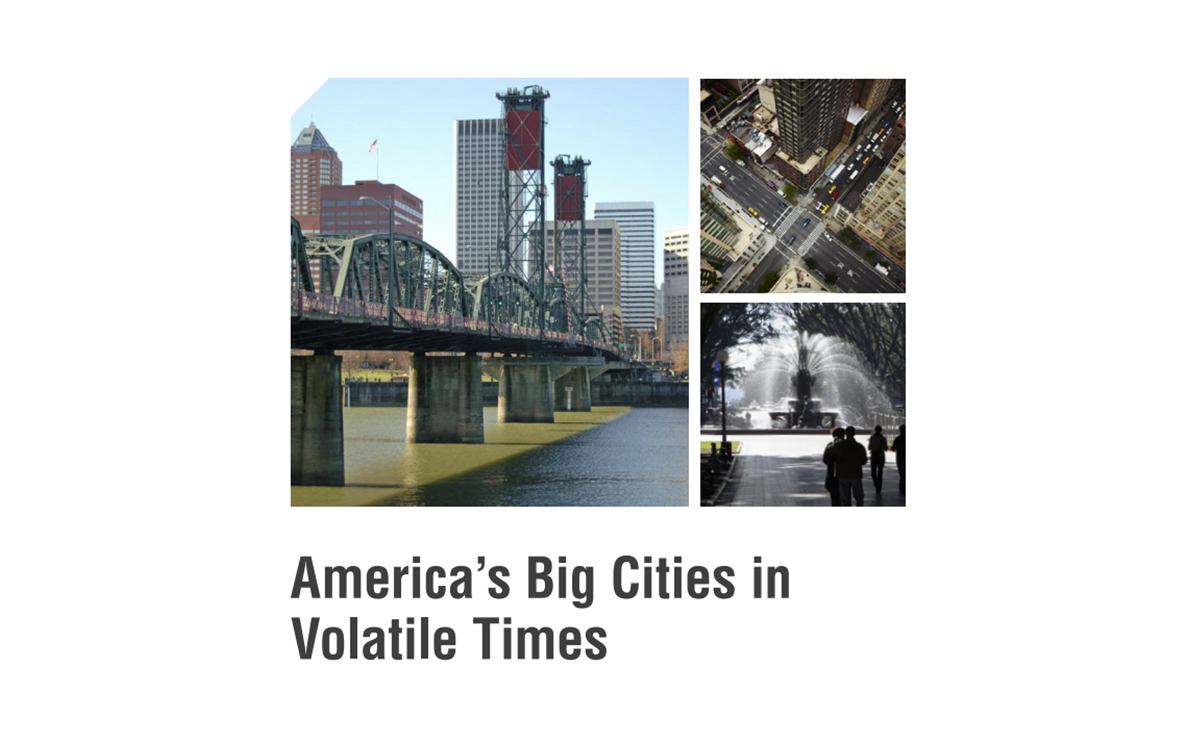A new study by The Pew Charitable Trusts, “America’s Big Cities In Volatile Times: Meeting Fiscal Challenges and Preparing for the Future,” found that 30 large U.S. cities have recovered slowly from the Great Recession and have utilized an array of tools to navigate the economic downturn.
“American cities are still suffering from the effects of the worst economic decline since the Great Depression,” said Kil Huh, director of state and local fiscal health at Pew. “As policymakers continue to confront difficult fiscal conditions, Pew’s analysis suggests that revenue challenges will continue in the coming years. This is important given the outsized impact cities have on the economies and long-term prosperity of their states and the nation as a whole.”
While each of the 30 cities studied had its own distinct experience, most cities’ budgets felt the effects of the Great Recession later than the federal and state governments. Relatively strong property tax collections helped defer the fiscal impact of the Great Recession on these cities, but in 2010 these revenues began to falter. Declining property tax collections, compounded by increasingly unpredictable aid from the federal and state governments dealing with their own budgetary constraints, suggest a difficult path forward.
Cities have dealt with these fiscal challenges in several ways, such as dipping into reserve funds, cutting spending, and increasing revenues from tax and nontax sources. For example, halfway through fiscal 2009, New York City reversed a 7 percent property tax cut and eliminated a homeowner rebate program, which boosted revenues and contributed $2.3 billion to property tax growth. Using a different strategy, Sacramento tapped its reserves during and after the Great Recession to help close budget shortfalls. This tactic reduced fund balances from 31 percent of general revenues in 2007 to just 6 percent in 2011. While these strategies offered some short-term solutions, by 2011, many cities were still dealing with both declining revenues and the consequences of reduced spending and shrunken reserves.
Key findings include:
- The 30 cities felt the recession’s fiscal effects late. Most hit their revenue bottoms a year or more after the end of the national downturn and after state governments reached their low points.
- More than two-thirds of the cities had not recovered to their previous revenue peaks by 2011. Among those cities that had rebounded to or above prior levels, improvements were often tenuous because revenue increases in many of them were driven heavily by aid from the federal and state governments, not growth from sources derived within the cities.
- Fluctuations in aid from the federal and state governments—a source that city policymakers do not control—was the leading factor in 14 cities’ revenue declines and rebounds.
- Declines in smaller revenue sources—such as investment income or income from the sale or lease of assets, like parking meters or facilities—played a disproportionate role in driving budget shortfalls in most cities.
- Property tax revenues remained relatively robust until 2010 and 2011. Further projected declines of this key source suggest cities may face new challenges in coming years.
Pew’s American cities project focuses on the biggest city in each of the nation’s 30 largest metropolitan areas and helps policymakers understand key challenges and promising solutions. For more information about each city and to view an interactive comparing all 30 cities across a range of fiscal indicators, visit www.pewstates.org/cities.
* * *
Methodology: Pew standardized data from the Comprehensive Annual Financial Reports (CAFRs) for each of these 30 cities to examine key elements of their fiscal conditions, including revenues, expenditures, reserves, and long-term obligations, and adjusted them for inflation to facilitate comparison across the years 2007 to 2011.
The Pew Charitable Trusts is driven by the power of knowledge to solve today’s most challenging problems. Learn more at www.pewtrusts.org
* * *
Originally posted at the American Cities Project by Sarah Leiseca.





